
Landcruising Adventure: Karin-Marijke Vis and Coen Wubbels
Share
Tell us a little about yourselves, what are you doing, and where are you at the moment?
We are an adventurous Dutch couple that has been exploring Asia and South America in an antique Toyota Land Cruiser since 2003. We work as a freelance travel writer/photographer duo, and our work has been published in 4x4/adventure, travel and food magazines, in print as well as online.
After 9 years of traveling on the South American continent it was time for a drastic change of scenery, cultural atmosphere and language, so we recently shipped the Land Cruiser to South Korea where we currently are.
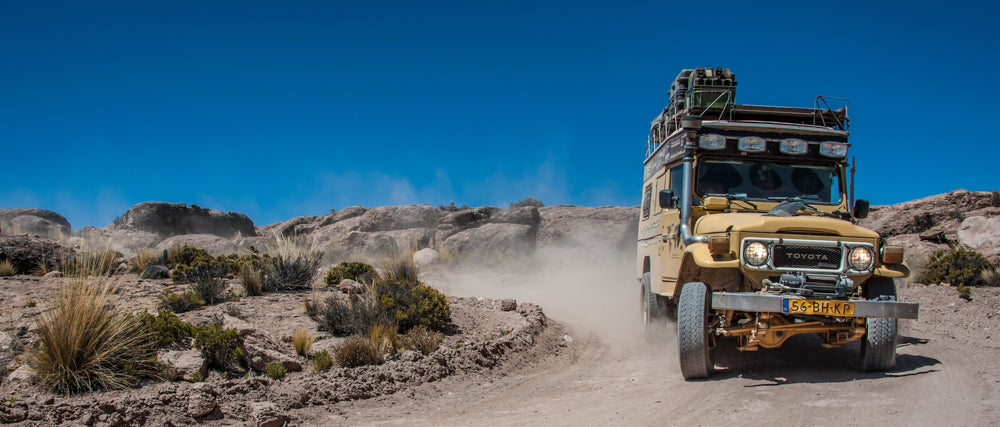
What is your background?
Coen: I slowly made my way through art school, picking the cherries from the courses on offer. Here I was first introduced to traditional photography and graphic design. After working for an advertising agency I started my own graphic design sign studio. I liked the freedom it brought me and the amount of free time which I used, among other things, for a couple of long motorcycle trips in Europe. This fueled my interest in the unknown and in order to satisfy that curiosity I had to find a way leave again. I met Karin-Marijke and we saw each other for the better part of a year. We lived far apart and neither of us was willing to move to the other side of the country, so the solution was simple: make a move together, which was the start of what would become our nomadic existence.
Karin-Marijke:After my bachelor degree in Hotel Management I worked for an in-house catering organization in different functions, continued my hitchhiking vacations to France with a friend, and learned to ski. I lived in a village where I grew my own vegetables, shared my home with two Bernese Mountain dogs and had a busy social life. However, the rat race got to me so when Coen suggested going on a long-term trip together I immediately said yes.
How did you get into off road adventures?
When Karin-Marijke didn't want to travel on my big Honda motorcycle we thought about setting off in a Citroen 2CV, or a VW Westfalia. Something with character. I seriously looked into a Land Rover Series as I really like their look. But when we saw and drove our current old Land Cruiser we were instantly sold.
It provided a home on wheels and its capability and robustness has allowed us to venture far from the well-trodden paths to find that perfect camping spot or to challenge ourselves conquering remote and rough terrain.
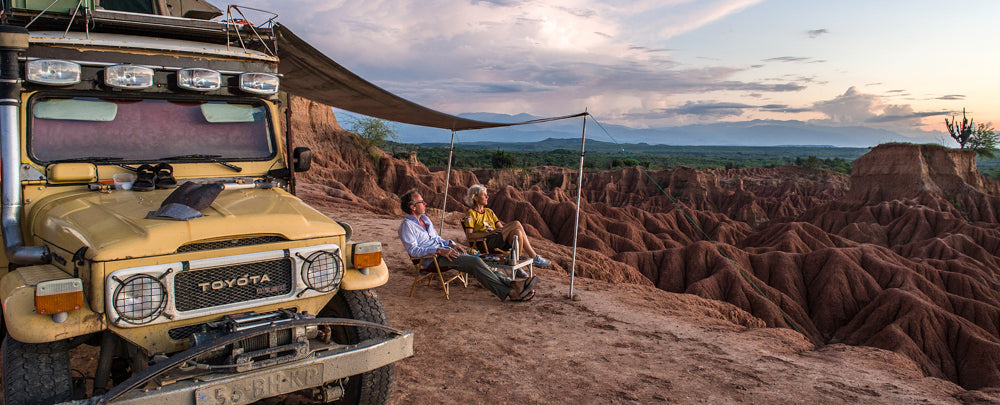
When you are traveling, it is the people who make the experience and I am sure you have met a lot of amazing and inspiring people. Does anyone in particular come to mind?
Now there’s a question. After many moons of traveling we can't remember all the waterfalls and sunrises. Even when looking at photos, we may still be wondering where exactly they were. But with people there is an emotional bond and we remember many of them, all with their own beautiful, crazy, dangerous, horrific, lovely or warm stories.
Coen: On a nightbus through the Taklamakan desert I accidentally left my book. I wasn’t even half way through it. It took another year or so for me to get my hands on another copy in Thailand. Who Needs a Road by Harold Stephens is about two men who drove to the remote corners of the world, to places where few men had ventured before. In 1965 they took one of the first 40 series Land Cruisers, a Jeep and a camper trailer with them, and set out on their two-year-long Trans World Expedition.
I wanted to share that book with some friends and while looking up the author I learned he lived in Bangkok. I took it as a sign and boldly wrote him an email, explaining who we were and that we were driving a similar 40 series across Asia. One thing led to another and we met many times over a period of a few months in late 2006. We camped in his garden and stayed with his family. We had already started getting our stories published in the Netherlands, but Steve introduced us to a number of other publications and he is one of the big motivators behind Karin-Marijke’s soon to be published book.
Karin-Marijke: For me the first person that pops in my head is an Iranian woman. She had been sent to Europe by her husband in 1979, after Khomeini became the country’s ruler, to raise their three children in a free world. Without speaking anything but Farsi she arrived in Italy where she was coerced into spending all her money on promised visas and residence permits, none of which materialized. When she was totally broke, and broken down, and had lost all faith in people, she met an Englishman who listened to her story and not only promised to help her, but actually did. He got her to England and organized all the paperwork so she could legally live there and get started.
Two kids went to primary school but she couldn’t work because of the language and a baby she was still breast-feeding. In order to get out of the house and learn English she would sit at bus stops and chat with elderly women for days on end. She lived in England for about twenty years until her children had left home for college and she could return to Iran to join her husband again.
The courage and persistence of this woman has been inspiring to me on many levels.
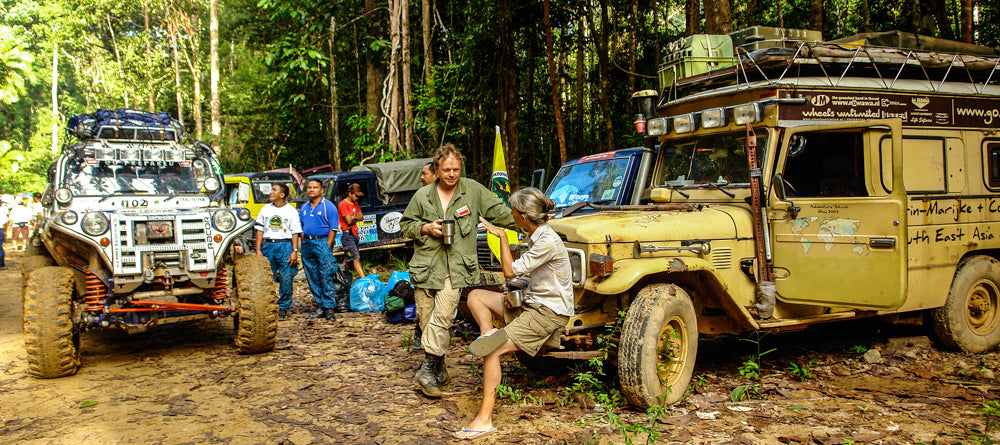
Where is the craziest place you have visited and what made it so crazy?
Tirumala, in India. It’s the holiest place in the country, where pilgrims come to offer their most prized possession: their hair. Before you’re allowed to enter this holy site, your car undergoes a thorough check by soldiers. Tirumala is visited by thousands of people per day and can be quite a madhouse – it makes you understand how stampedes are possible during religious events, as happens in India every once in a while. Walking around in a town of baldies, their heads covered with a yellow substance (ground sandalwood) to prevent sunburn, was one thing, but to actually visit the building where all these people have their heads shaved was unnerving.
Whereas most people approached the building with confidence, some slowed down when nearing the tiled room, which looked like an indoor swimming pool with only the water missing. Barbers sat along white-tiled gutters, hair swirling around them. Some pilgrims stood pinned to the ground, too afraid to move. The not-so-courageous ones changed their mind and donated a snip of hair instead. In case of a yes, the barber skillfully shaved the head in a matter of seconds, hair falling in the gutter in thick tufts. The sight turned our stomachs.
You have been on the road traveling for 13 years. How do you stay motivated to keep going, and not settle down and stay put for a while?
I think two elements play a role here: slow travel and combining travel with work. Both have to do with staying in places and digging beyond the surface. For example, when visiting India, it is easy to grow tired of temples. “They are all the same,” you may quickly conclude –understandably.
By staying longer in places you may discover that each temple has its own story, e.g. by reading up about them (at another level than in a guidebook), or by staying with local people, who may share their personal stories with you about what makes a temple special to them, or who may make you part of their visit to this temple. Staying with local people has also shown and taught us what religion means in their daily lives and suddenly temples are no longer a tourist attraction so to speak, but places that have a certain importance to people, which extends to their homes (e.g. in the construction of home temples, home offerings).
As a result a place becomes alive, sometimes fascinating. Simultaneously, or in other cases, wanting to write about this temple can be a motivation as well to search for its background story, making it more interesting and – we find – often resulting in wanting to see and learn more.
Having said that, after about 7 years on the road we did reach a moment when we were in need of a time-out. As a result we lived in Suriname for close to a year, although we did alternate that stay with frequent trips to neighboring French Guiana.
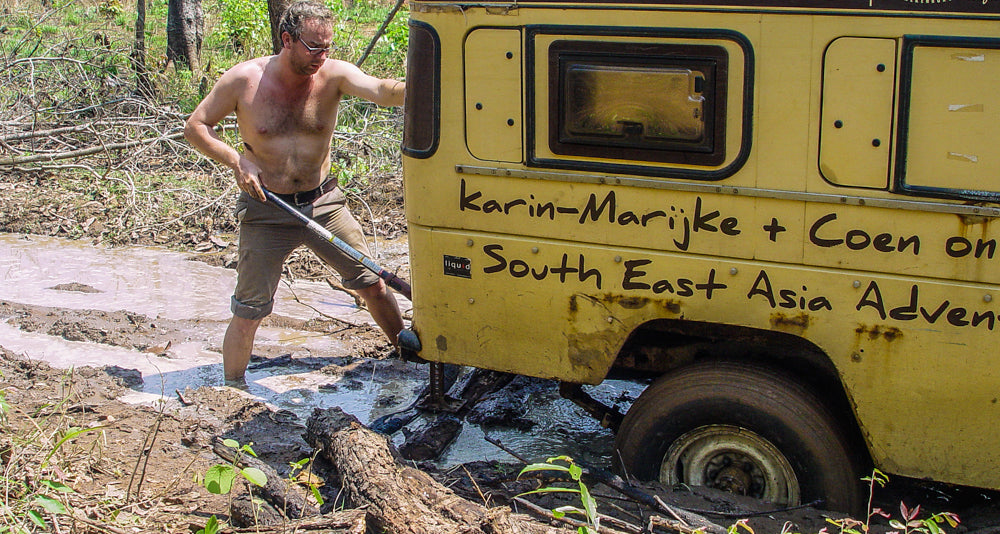
What tips do you have for someone who looks at what you are doing and wants to start an adventure like yours?
Simplify and improvise. Everything you own can break or get stolen, which gives headaches. To own as little as possible simply spares you a lot of those pains. Another reason to simplify and improvise is budget. When preparing your journey you can drive yourself crazy reading fancy magazines and traveler blogs about everything you supposedly need to survive anywhere outside your immediate surroundings. That, to put it simply, is absurd. You don’t need much.
This tip, which we got from experienced travelers, will help you make choices: With everything you hold in your hands and are about to walk to the cashier with – or which you selected online and are about to put on the ‘add to chart’ – reflect: This gadget costs (let’s say) 25 dollars, which equals (let’s say) 1 day of travel. Which do I really want: this thing or the experience of another day of traveling? Obviously, 1 day of travel won’t make that much of a difference on a long-term trip, but since you can easily be persuaded to spend thousands of dollars on stuff, this decision may make a difference in months of traveling.
Also remember, it’s not as if the rest of the world doesn’t have shops. It does. It also has hospitals, pharmacies and drug stores. Therefore, a year of general (non-prescribed) medical supplies is ridiculous (unless you intend to drive on the North pole for a year).
I can imagine you have become an accomplished mechanic. What was the hardest breakdown you have had to fix? Before you started traveling, did you have any mechanical experience?
The hardest breakdown, emotional and time-wise, was the overhaul of our Land Cruiser in Bolivia, in 2010 (it was one of the reasons for our subsequent time-out in Suriname mentioned earlier). The workshop said it would need 8 weeks for a complete, frame-up restoration. It turned into a 6-month nightmare and we are still confronted with the results of this bad job today. It's a long story, one you might want to hear one day after a few beers around the campfire.
Thirteen years ago, Rocco—the mechanic who taught me some basic maintenance skills—fooled me by telling me to drain the differential oil with an air tool at full blast. Yup, oil all over me. I was a newbie and this was a proper inauguration test. I’ve come a long way since then. E.g. last year—under the good guidance of some mechanics—I took apart and overhauled that same limited slip differential, as well as the gearbox.

I don’t think I could ever fully prepare myself for all the potential mechanical disasters, no matter what experience I gain along the way. I could bring along any spare part I like, but most likely the thing that breaks down will not be in the back of our truck. Rocco’s advice was to bring a small box of bolts, which was brilliant.
Without much thought I went out there and explored, left my comfort zone and improvised. Inevitably something will go wrong, and that's where the adventure starts.
I am sure you have had some close calls or experiences. Can you share one with us?
Our closest call was in Laos, where we got lost in the jungle and needed five days to find an access to the civilized world. This in itself was a great adventure but we had one close call: the track had become so bad that on one of those days we covered a bare nine kilometers. At one point it was more rock crawling than anything else and when we had to negotiate a big boulder on our right side with a vertical precipice plunging down on our left, I got out of the car to guide Coen around that tricky point.
Another stumble and jump followed. The front left wheel went up into the air and the entire weight of the Land Cruiser came to rest on its right rear wheel. The car reared up like a horse and came toppling towards me. I ran off, slipped, and fell on a pointed rock. I tried to crawl away but couldn’t move. I expected the car to come crashing down on me. Seconds later I opened my eyes and found myself on the ground—yards away from where I had fallen.
How did I get here? I had no memory of having run there myself and I can’t explain how I got there, out of the range of the falling car. Had guardian angels lifted me? It was an extraordinary experience. When I turned around I saw the Land Cruiser still standing and heard Coen shouting for help. He needed me to put a stone behind the wheel so the car wouldn’t slip back. He had conquered the corner! He had no idea what had happened to me and it took a minute to clear up the situation. Coen was shaken as well, he too had thought the car was going to roll over. After a while I could walk again. My upper leg turned all colors of the rainbow in the following week but it functioned all right.

Of all the customizations to the Land Cruiser, which are you most proud of?
One of the previous owners had used the Land Cruiser for his travels [I assume in the Scandinavian countries, considering the insulation and external heater]. As a result we bought it pretty well-equipped and needed to make only some minor adjustments – lucky for us, as we had little time and a small budget. I'm not going to give you the list of adjustments as you can find all that on our website (find it here).
- Less clutter in the car, mainly by storing and packing things more efficiently and by making better use of the space available. This meant throwing away unused stuff and making sure the middle section of the car stayed empty. Over the years we have replaced chunky, low-quality products with high-quality ones that take up less than a quarter of the space, for instance Kermit chairs (we wrote about them here).
- Building drawers, as well as ways to access empty areas between the insulated walls and the body of the car.
- Installing an integrated water system.
- Installing a new electrical system. Until then we had a mixed bunch of batteries, solar panels without a controller, and a 30-year-old fridge. It worked, sort of, but now we knew what we needed and wanted, and had the money, so we bought two good batteries, a solar panel with a-state-of-the-art controller and a new fridge in one go.
(On the website you’ll find the 3-part series on the overhaul and restoration in Guyana and Suriname).
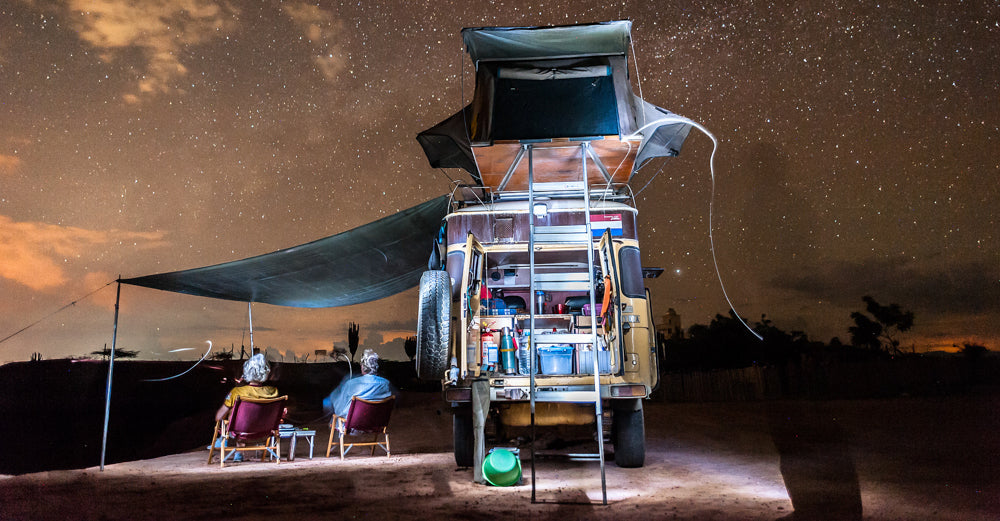
How did you discover Armadillo Merino® and what do you think?
We were introduced to Armadillo through our friend John de Vries, who spoke very highly of Armadillo products. We are now in Korea (see para.1) and will explore Japan during the cold winter months. We feel fully prepared with Armadillo undergarments, gloves and hats and look forward to Armadillo being part of this adventure.

Where can we learn more about your adventures?
![]()
 Photo Coen
Photo Coen  Landcruising Adventure
Landcruising Adventure
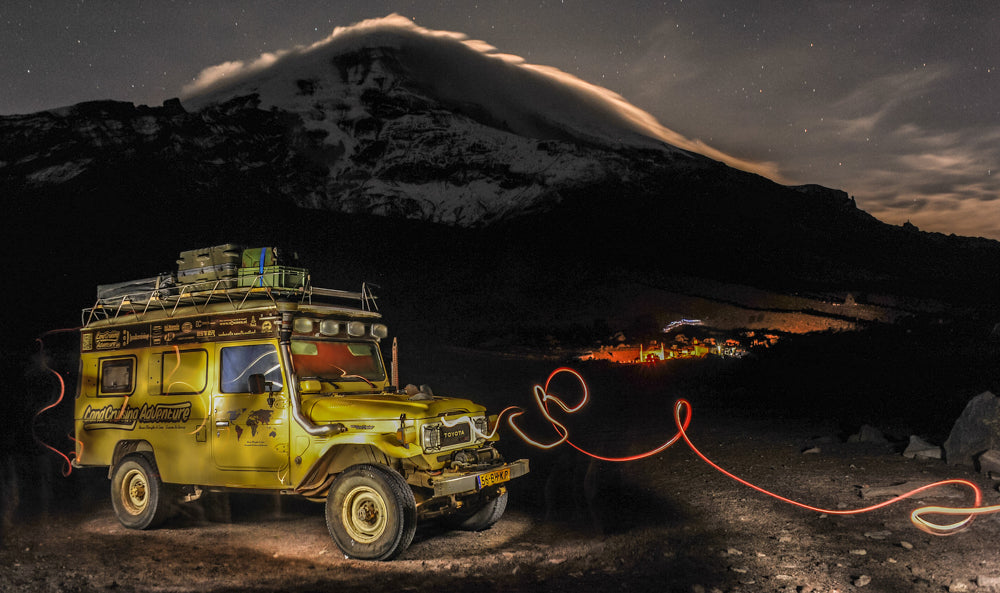
Photos compliments of Coen Wubbels (photocoen)



